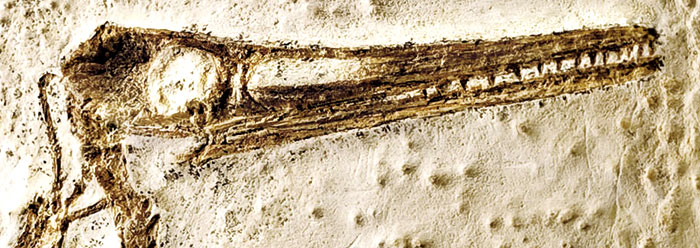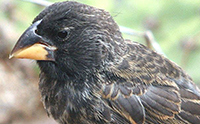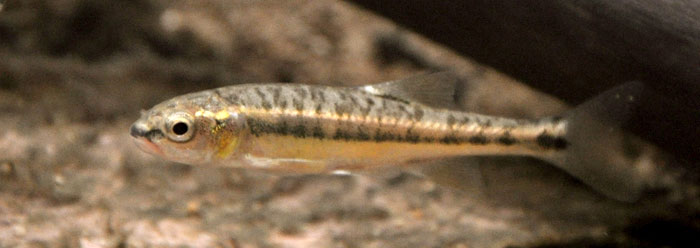Charles Darwin admitted that the sudden appearance of fully formed creatures in fossil deposits was one of the biggest problems with his hypothesis that nature generated living creatures through natural selection. His vision of organisms gradually morphing from one kind to another over vast time spans predicted that most fossils should reflect that steady grading from one basic body plan to another.
Some scientists believe they have found a creature that bridges one of the many gaps in the fossil record, although it requires a significant reworking of evolutionary theory. The crow-sized pterosaur fossil from China has been named Darwinopterus in honor of the “year of Darwin.” This is certainly ironic, considering the fact that the creature had none of the partially graded features that would show transition from one to the other of the two major pterosaur types. Instead, it demonstrated a unique mosaic of fully functional body parts.
Until now, all pterosaurs were thought to be either Rhamphorhynchoid, which had long slender tails, or Pterodactyloid, which had very short tails, among other differences. Evolutionists have therefore long been searching for forms that showed transitional change between these two pterosaur body plans. In particular, there ought to be fossil forms showing gradually shortening tails as pterosaurs are sampled from lower to higher rock layers.
David Unwin, professor at the University of Leicester, said in a university press release, “We had always expected a gap-filler with typically intermediate features.”1 But this expectation has gone unfilled for 150 years. The report of Unwin and his team published online in Proceedings of the Royal Society B stated:
Frustratingly, relevant fossils are still comparatively rare, most transitions have yet to be documented in detail and the mechanisms that underpin such events, typified by rapid large scale changes and for which microevolutionary processes seem insufficient, are still unclear.2
Instead of showing the expected transitional attributes, Darwinopterus was a mosaic of fully formed features woven into a whole and functional animal, now presumed extinct. The researchers noted that it had a head like Pterodactyloids, but it also had the body and long tail of Rhamphorhynchoids. This “bizarre” combination “came as quite a shock to us.”1
Thus, these authors advocated a controversial new “mechanism” for the origin of species—rapid, modular evolution. In this view, significant and “whole groups of features (termed ‘modules’ by the researchers)” somehow shuffled between different life forms, then became rewired to make a totally novel form, very rapidly.1 However, there remains no empirical evidence for a process like this occurring today.3 Instead, “modular evolution” is entirely inferred from the fossil record’s lack of clearly transitional forms.
Darwinopterus still provides no evidence for gradual transitions between major functional body parts―neither within pterosaurs, nor between their supposed land-based reptile ancestors and flying reptile descendants. And without such gradual changes, the creation of discrete forms must be considered as a superior origins explanation. Thus, the admitted evolutionary frustration is quite understandable.
The creation model predicts that each living creature always existed in basic “either/or” forms. It is thus gratifying for Bible believers, and not at all frustrating, to learn that fossil creatures are found exactly that way.
Unwin admitted that “whole groups of features…that form important structures…seem to have evolved together.”1 It would be difficult to find a better way to describe God’s creative activity as revealed in a plain reading of Genesis―whole groups of features that form important structures appeared together suddenly, when “he spake, and it was done; he commanded, and it stood fast.”4
References
- New Type of Flying Reptile Discovered. University of Leicester press release, October 14, 2009.
- Lü, J. et al. 2009. Evidence for modular evolution in a long-tailed pterosaur with a pterodactyloid skull. Proceedings of the Royal Society B: Biological Sciences. Published online before print October 14, 2009.
- This is not to be confused with the shuffling of certain minor features within a kind, called “facilitated variation.” See Thomas, B. What Spurs Evolution: the Old or the Young? ICR News. Posted October 17, 2008, accessed October 15, 2009.
- Psalm 33:9.
* Mr. Thomas is Science Writer at the Institute for Creation Research.
Article posted on October 21, 2009.
























